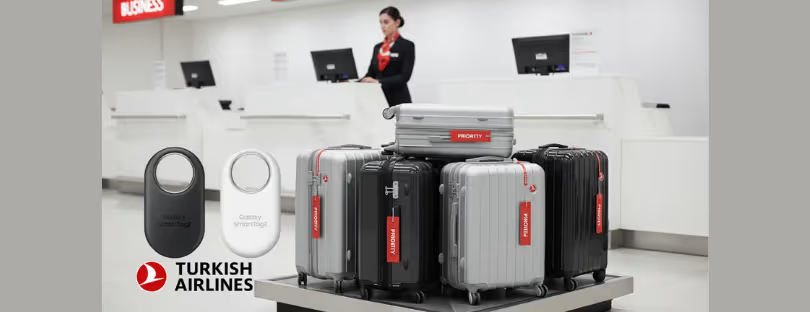
Why Travel Compression Socks Are a Must-Have for Long-Haul Flights
Picture this: you’re about to embark on a long-haul flight to your dream destination. Your itinerary is set, your suitcase is packed, and you’re counting down the hours until takeoff. But have you thought about your comfort during the flight? More importantly, have you packed a pair of travel compression socks?
If not, you’re missing out on a small but mighty travel essential that can make a world of difference on those marathon journeys. Compression socks might not be the most glamorous item in your carry-on, but trust me, they are worth their weight in gold. Let’s dive into why these underappreciated accessories are a game-changer for your long-haul travel experience.
What Are Compression Socks, Anyway?
Before we get into why they’re so amazing, let’s talk about what compression socks actually are. Unlike your regular socks, compression socks are specially designed to gently squeeze your legs. This pressure helps improve blood flow, reduce swelling, and prevent blood clots, especially during periods of inactivity—like sitting on a plane for hours on end.
They come in various lengths, from ankle-high to knee-high, and offer different levels of compression. Some are made for medical purposes, while others are tailored for travelers, athletes, and even pregnant individuals. So, they’re not just a one-size-fits-all kind of product—you can choose a pair that suits your specific needs.
Why Long-Haul Flights Are Hard on Your Body
Let’s face it: long-haul flights are a mixed bag. Sure, you get to binge-watch movies, catch up on podcasts, and (hopefully) sleep, but they can wreak havoc on your body. Sitting in a cramped airplane seat for hours means your legs are bent, your feet might be dangling, and your movement is restricted. Combine that with cabin pressure and dehydration, and you’ve got the perfect storm for swelling, discomfort, and even potential health risks.
One of the most concerning issues is the risk of deep vein thrombosis (DVT). This condition involves blood clots forming in your veins, often in your legs, due to prolonged inactivity. While DVT is rare, especially for healthy individuals, it’s a risk that increases during long-haul flights. And even if you’re not worried about DVT, there’s the annoying (and often painful) swelling in your feet and ankles to contend with. Nobody wants to hobble off the plane feeling like their legs are twice their usual size.
The Benefits of Compression Socks for Long Flights
Compression socks might not eliminate all the discomfort of a long flight, but they address some of the most common complaints. Here’s how they can help:
1. They Improve Circulation
When you’re sitting for long periods, your blood tends to pool in your lower legs and feet. Compression socks gently squeeze your legs, promoting better circulation and preventing blood from stagnating. This is especially important for preventing swelling and minimizing the risk of blood clots.
2. They Reduce Swelling
Even if you’re not prone to health issues, it’s almost inevitable that your feet and ankles will swell during a long flight. Compression socks help keep that swelling in check by improving blood flow and preventing fluid from building up in your lower extremities.
3. They Keep Your Legs Comfortable
Let’s be real—airplane seats are not the epitome of comfort. Compression socks add an extra layer of coziness to your journey. They also reduce the likelihood of that heavy, achy feeling in your legs after hours of sitting.
4. They Can Prevent DVT
While DVT is rare, the risk shouldn’t be ignored—especially if you have risk factors like a history of blood clots, pregnancy, or recent surgery. Compression socks are a simple, non-invasive way to reduce that risk and give you peace of mind.
5. They Aid Post-Flight Recovery
The benefits of compression socks don’t stop when you land. They can help your legs recover faster from the strain of long-haul travel, meaning you’ll be ready to hit the ground running (literally or figuratively) when you arrive at your destination.
Choosing the Right Compression Socks for Travel
Not all compression socks are created equal, so it’s important to choose the right pair for your needs. Here are a few things to consider:
- Compression Level: Look for socks with a moderate compression level (15-20 mmHg) for travel. This is strong enough to improve circulation without being too tight or uncomfortable.
- Length: Knee-high compression socks are ideal for long-haul flights because they provide full coverage for your lower legs.
- Material: Opt for breathable, moisture-wicking fabrics to keep your feet dry and comfortable during the flight.
- Fit: Make sure the socks fit snugly but not so tightly that they cut off circulation. Many brands offer sizing guides to help you find the perfect fit.
If you’re new to compression socks, it’s a good idea to test them out before your flight. Wear them for a few hours to make sure they’re comfortable and effective.
Tips for Using Compression Socks on a Long Flight
Wearing compression socks is pretty straightforward, but a few tips can help you get the most out of them:
- Put Them On Before the Flight: Don’t wait until you’re on the plane to put on your compression socks. Slip them on before boarding to ensure your legs are supported from the get-go.
- Stay Hydrated: Compression socks work best when your body is hydrated, so drink plenty of water during your flight.
- Move Around: Even with compression socks, it’s a good idea to stretch and move your legs periodically. Take short walks up and down the aisle or do simple exercises like ankle rolls in your seat.
- Remove Them Comfortably: After a long flight, your legs might be sensitive, so take your socks off gently. Avoid yanking them off quickly, as that could be uncomfortable.
Who Should Definitely Pack Compression Socks?
While compression socks are beneficial for most travelers, some people stand to gain even more from wearing them. You should absolutely consider packing a pair if:
- You’re over 40 (DVT risk increases with age).
- You have a history of blood clots or circulation issues.
- You’re pregnant or recently postpartum.
- You’re on birth control or hormone therapy (both can increase clotting risks).
- You’re traveling with a medical condition like diabetes or varicose veins.
Even if you’re young and healthy, compression socks are still a fantastic way to boost your comfort on a long flight.
Conclusion: A Small Investment for Big Benefits
Traveling is one of life’s greatest joys, but long-haul flights can take a toll on your body. The good news? A simple pair of compression socks can make all the difference. By improving circulation, reducing swelling, and keeping your legs comfortable, they’re the unsung heroes of long-haul travel.
So, the next time you’re packing your carry-on, don’t forget to include a pair of travel compression socks. Your legs will thank you—and you’ll arrive at your destination feeling ready to explore instead of needing a day to recover. Safe travels!












